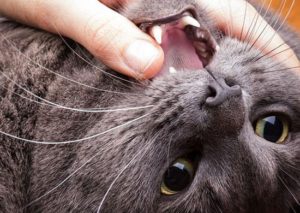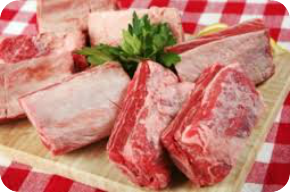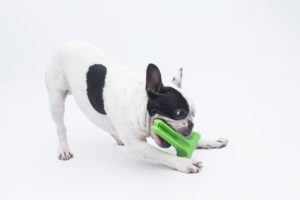
As you know, here at Protecting Pets Naturally, we are all about natural choices for your pets. That is just as important when it comes to your pet’s teeth and so today we bring you our top tips for natural dental care for dogs and cats.
Brush Your Dog’s and Cat’s Teeth Regularly
Most people know they should brush their own teeth at least twice a day, but did you know that brushing your pet’s teeth is just as important? Just like humans, dogs and cats can develop plaque and tartar on their teeth, which can lead to gum disease and tooth loss. Regular brushing can help to remove plaque and prevent tartar build-up, keeping your pet’s teeth healthy and clean.
Plus, toothbrushing is a great opportunity for some quality bonding time with your furry friend. While brushing your dog’s teeth may seem like a daunting task, it’s actually quite simple. Just start slowly and be gentle, and you’ll both be enjoying fresh breath in no time. This is a great guide to get your dog used to the process. You can do something similar with cats, but the process may take longer for your cat to get used to.
The important thing to remember is never to use commercial toothpaste for humans, as this is toxic to pets, could include xylitol which is deadly to pets, and the foaming action can make them choke.
Instead, use a dog or cat specific toothpaste. If you want to create your own, then scroll down for my homemade dog and cat toothpaste recipe guide.

Allow Your Dog Raw Bones
Dogs have been chewing on bones for centuries to clean their teeth. Gnawing on a bone helps to remove plaque and prevent tartar, keeping teeth healthy and sparkling white. In addition, chewing on bones can also promote gum health by stimulating blood flow.
It’s important, though, to be safe when allowing your dog to chew on bones, as splinters can lead to internal injuries and gnawing on dense bones for too long could lead to tooth damage.
- First, and most importantly, always monitor your dog when they have a bone, so you can ensure there is no splintering and that your pet does not choke. Dogs can also become quite possessive about bones, so be mindful of this if you have other pets or children in the home.
- Always feed 100% raw bones. Cooked bones are more likely to splinter and cause injuries to the mouth or be swallowed and cause damage to the digestive tract. Smoked bones will be too dense and could damage teeth.
- Serve meaty bones, as the process of pulling the meat and gristle from the bone will clean your pet’s teeth more effectively. Large beef bones are ideal. As the dog chews them and they become smaller, they should be replaced.
- Serve a bone that is the right size for your breed of dog. A rule of thumb seems to be that the bone should be about the size of your dog’s head. Large enough that they can’t get it into their mouth and swallow all or parts of it, but not so large the bone is too hard and dense.

Dental Care Chew Toys
There is a wide range of chew toys and dental treats available for both cats and dogs that can help to keep their teeth clean.
We stock the Bristly Brush, which is a DIY dog toothbrush. Your dog can sit and gnaw on it, just as they would a bone, and the movement of the brushing stick in their mouth will mimic the action of brushing their teeth. You can find the Bristly Brush for large dogs here, and small dogs here.

It’s also a good idea to take the natural approach and to let your dog chew on crunchy food, such as apples and carrots. Because they must chew these well, they can help to clean their teeth. With apples, keep the skin on as this helps to clean the teeth and provides pectin, but make sure the dog never eats the seeds of the apple, as these are poisonous. You should also avoid feeding the core of the apple, as it can be a choking hazard.
The more proactive you can be when it comes to your dog or cat’s dental health, the better. Probably the most important factor will be to brush their teeth regularly, and the younger they are when you start this, the more quickly they will get used to it. However, even with an older dog or cat, it’s worth persevering, as it will be even more valuable for their dental health.
Homemade Dog And Cat Toothpaste Recipe Guide
I personally recommend Young Living essential oils (quote member no. 10397927 if you wish to support me as an affiliate) as they are tested and proven to be 100% organic and pure therapeutic grade oils. Synthetic oils contain chemical additives and should be avoided.
Recipe 1. Peppermint K9 Toothpaste
Note: You can use this recipe on cats but replace peppermint oil with helichrysum oil or myrhh oil.
Ingredients:
1 drop parsley oil
2 drops peppermint oil
1 tablespoon food grade diatomaceous earth
1/2 tablespoon baking soda
2 teaspoons melted organic coconut oil
Directions:
Mix DE, baking soda and oils in a small glass jar. Add enough coconut oil to make a paste. Store in a cool, dark cupboard, not a fridge or the coconut oil will go hard.
Recipe 2. Bentonite Clay and Probiotic Toothpaste
Note: You can use this recipe on cats but replace peppermint oil with helichrysum oil or myrhh oil.
Ingredients:
2 drops parsley oil
1 drop peppermint oil
1 tablespoon bentonite clay
1/2 teaspoon probiotic
1/8 teaspoon Himalayan pink salt
2 teaspoons coconut oil
Directions:
Mix bentonite clay, probiotic, salt and essential oils in a small glass jar. Add enough coconut oil to make a paste. Store in a cool, dark cupboard, not a fridge or the coconut oil will go hard.
Recipe 3. Kelp Toothpaste for Cats & Dogs
Ingredients:
2 drops parsley oil
1 drop helichrysum oil
1/2 tablespoon kelp
1 tablespoon food grade diatomaceous earth
1/8 teaspoon Himalayan pink salt
2 teaspoons melted organic coconut oil
Directions:
Mix D.E, kelp, salt and essential oils in a small glass jar. Add enough coconut oil to make a paste. Store in a cool, dark cupboard, not a fridge or the coconut oil will go hard.
Lorem ipsum dolor sit amet, consectetur adipiscing elit. Ut elit tellus, luctus nec ullamcorper mattis, pulvinar dapibus leo.
